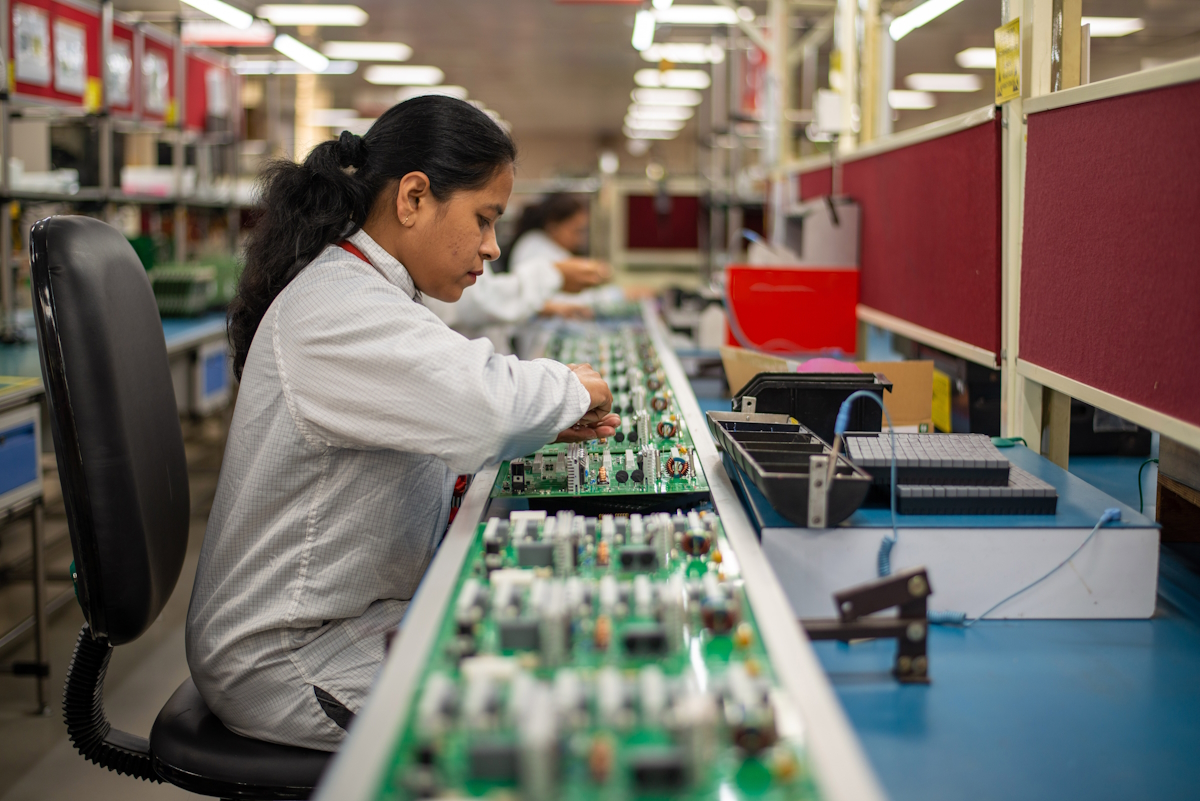India’s semiconductor industry is bracing itself for a massive goal. The government has set a target of $300 bn worth of manufacturing by 2025 for the electronics sector and semiconductors are expected to play a vital role. The current domestic demand for semiconductors in India is around $24 bn, which India primarily imports from countries like China, Hong Kong, Singapore, South Korea, the US, and Germany.
But lately, the country has been proactively strengthening its foothold in the chip-making space as a part of its Make in India policy. It plans to lead the semiconductor supply chain and dominate the sector’s export market. India’s External Affairs Minister, S. Jaishankar said at the Semicon India Conference 2023 in July, “Our semiconductor mission is not just about meeting domestic requirements. It is also about contributing to the global demand for trusted manufacturing.”
According to a joint study by Counterpoint Research and the India Electronics & Semiconductor Association (IESA), India’s semiconductor market is expected to touch $64 bn by 2026, growing threefold compared to $22 bn in 2019. The ‘telecom stack’ and industrial applications account for two-thirds of the total market, according to the report.
Semiconductor investment by foreign companies
In June 2023, Prime Minister Narendra Modi and US President Joe Biden signed the Memorandum of Understanding (MoU) on Semiconductor Supply Chain and Innovation Partnership with the objective of coordinating semiconductor incentive programmes between India and the US.
US semiconductor giant Micron Technology announced an investment of up to $825 mn to set up a semiconductor assembly and test facility in the western Indian state of Gujarat. At the same time, Applied Materials, already functioning in India for two decades, has announced an investment of $400 mn. This new investment is for a span of over four years for an engineering centre in the city of Bengaluru. Another report in the Economic Times revealed that Foxconn wants to establish at least four to five semiconductor fabrication lines in the country.
Factors driving India’s semiconductor dream
The growth of India’s semiconductor sector is likely to be driven by consumer electronics, electric vehicles, other automobiles, and the adoption of 5G and IoT devices.
Government incentives and the ease of doing business are two big reasons that have spurred foreign investment in India’s chip-making industry. India’s Central and State Governments are offering an incentive of over 70% of the total cost for setting up a semiconductor manufacturing plant. The Central Government not only finances 50% of the project but also spends on R&D, skill development, and training. The government is also working on reducing the number of approvals and making compliance easier for foreign companies to invest in India.
Besides these factors, the ‘China plus one’ strategy adopted by several nations has begun favouring India. Investments in China are getting diverted to India and other nations like Vietnam and Malaysia. “I think India’s opportunity currently is to cash in on the ‘China plus one’ opportunity. This opportunity won’t stay open for 10 years. It is a three- to five-year opportunity when supply chains start relocating or add another location that is going to need work,” said Ajay Banga, the Chief of the World Bank, during a recent visit to New Delhi. Indian chip companies like SPEL Semiconductors, ASM Technologies, and Moschip Technologies are likely to be direct beneficiaries.
Challenges for India’s semiconductor goals
While India has set an ambitious goal to establish itself on the global semiconductor map, it faces myriad challenges. The country had to deal with a shock in July when Foxconn pulled out of its joint venture with mining company Vedanta. Now both companies are participating separately in India’s semiconductor goals.
India faces stiff competition from China, Taiwan, and South Korea which have already established themselves as semiconductor manufacturing hubs. Moreover, setting up chip manufacturing plants demand a massive infrastructure investment for water, electricity, and logistics. Also, the fabrication process is quite complex and requires highly skilled manpower. Finding the right kind of labour for this is difficult at present. “..the dilemma with India is you have the world’s brightest people, the youngest people, but there’s no experience on actually working in a wafer fab or a foundry,” said David Reed, CEO of Vedanta Foxconn.
As a significant portion of the value chain is located outside of India, establishing an end-to-end domestic value chain for semiconductors could involve significant time and investment. It is imperative that supply chain issues are resolved before India can take the big plunge.
Also, chip-designing is not a one-time process. As the designs of chips are subject to rapid changes, semiconductor companies must constantly invest in using newer technologies. Chip manufacturing is a highly cash-intensive business, and the break-even cycle is longer. This is one of the primary reasons why remarkably few players have survived in the industry.
India’s aim to be a semiconductor hub is a promising one. However, the country requires tremendous R&D capabilities, skilled manpower, and a lot of monetary investments to sustain the long gestation period of semiconductor projects. Hence, it’s best when incentives are given to the existing and prospective players in the industry in a phased manner because the semiconductor business takes a long time to break even.










 Australia
Australia China
China India
India Indonesia
Indonesia Japan
Japan Malaysia
Malaysia Philippines
Philippines Singapore
Singapore South Korea
South Korea Taiwan
Taiwan Thailand
Thailand Vietnam
Vietnam Germany
Germany Hong Kong
Hong Kong USA
USA Switzerland
Switzerland Singapore
Singapore
 United Kingdom
United Kingdom








